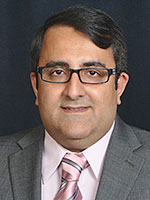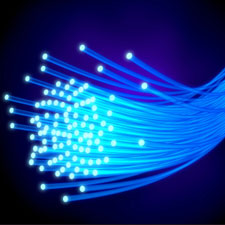Recent News
CHTM Joins NSF's NQVL Pilot Projects
August 9, 2024
OSE PHD, Dr. Xuefeng Li - Wins The Outstanding Interdisciplinary Graduate Programs Award
May 10, 2024
Dr. Ali Rastegari - 2024 OSE Best Dissertation Award Winner
May 10, 2024
2024 OSE Spring and Summer Graduates
May 10, 2024
News Archives
Extremely Broad Transmission Bandwidth Hollow Core Optical Fiber
October 28, 2016 - Republished from STC.UNM

Arash Mafi
Arash Mafi, Interim Director of CHTM and UNM Physics & Astronomy Associate Professor, together with Behnam Abaie, Research Assistant at CHTM, have devised designs for hollow core fibers based on a novel light confinement mechanism.
Abstract:
The objective of this technology is to significantly expand the transmission bandwidth compared to conventional hollow core photonic crystal fibers (HC-PCF). Also, these fibers will reduce bend sensitivity while introducing a potentially easier and more reproducible fabrication process compared to current highly complex manufacturing techniques.
The advantages of this technology include:
- Supports a broad wavelength range
- Easier and reproducible fabrication process
- Reduces bend sensitivity
- Applications in telecommunications, pulse compression/shaping, sensors, spectroscopy, nonlinear devices, lasers, etc.
Technology

A hollow core optical fiber guides light within a hollow region where only a very small portion of optical power propagates inside the solid fiber material (typically a glass). This helps to minimize nonlinear effects and provides a significantly higher damage threshold. Light guiding within a hollow core is not possible with conventional optical fiber designs which work based on total internal reflection. Other different guiding mechanisms can be used, based on a photonic bandgap, such as in a photonic crystal fiber with a certain structure. The main issue with a photonic crystal fiber is the limited wavelength range in which the photonic bandgap guiding works. There is a need for advanced hollow core fiber designs that provide increased wavelength range and easier reproducibility.
The Science & Technology Corporation at UNM, STC, has filed intellectual property on this exciting new technology and is currently exploring commercialization options.


